Inventory No. 21126 [1] – A Well Travelled Camera Case
Added by Cheryl Wolfe on 14/10/2008
This particular camera and kit belonged to T.E. Lawrence and was used while on his archaeological excavations. The camera was made by J.H Dallmeyer c. 1910 and is of a shallow box-form, front focusing, mahogany quarter plate hand held camera, with a rise and swing front lens panel. Alongside the camera there are a number of lenses in their small Morocco leather covered cases, a dark cloth and six dark plates; all of which are kept in the leather carrying case. This case is divided into two compartments, lined with green velvet and has brass lock and hinges. When the lid is opened, Lawrence’s address can be seen, inked onto the front of the leather.
The camera, lenses and dark plates are all in pretty good condition, however, it appears that the leather case has served its purpose well and has taken the brunt of the damage. The exterior is very worn, scuffed and abraded from use, and much of the stitching has failed particularly at the corners and along the carrying handle. There are a variety of marks on the surface of the leather including watermarks, spots of white paint and remnants of adhesive labels. The majority of the damage is along the hinged lid area along the top back edge of the case where the leather has split to approximately half the length of the hinge, and subsequently the interior textile. This lining is worn and has been considerably faded through light damage, particularly on inside of the lid. Sections of textile have become detached from the substrate and it has been torn along the length of the hinge (Figs.2 and 3).
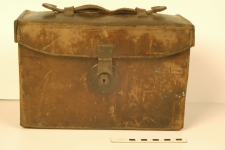
Fig. 1 Object on receipt: view of the front.
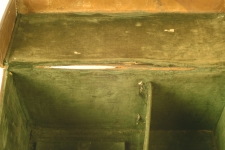 Fig. 2 Showing split in textile lining.
Fig. 2 Showing split in textile lining.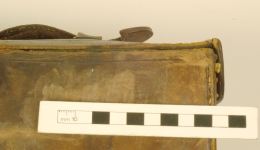
Fig. 3 Showing split in the leather along the hinge.
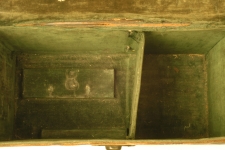
Fig. 4 Showing loose debris inside the case and damage to the dividing board.
The one remaining, textile covered dividing board (forming the compartments inside the case) has come adrift from it’s attachment to the back of the case. This is due to a combination of stitch failing and the textile fibres tearing (Fig.4). There is a lot of lint and particulate dirt attached to the nap of the textile, especially to the base.
The front proper left corner of the lid is damaged and dermis fibres are being lost.
To begin with the interior of the case was vacuumed using a museum vacuum with miniature attachments and the hard to reach corners with a micro vacuum pump. Areas of lifting textile were then re-adhered back into position using wheat starch paste, and for the larger, curled up areas of textile; gentle humidification was undertaken to make this process much easier.
Due to the damage around the stitch holes on the leather handle, it was decided to adhere the two pieces of leather together using wheat starch paste instead of passing new stitch threads through the existing holes, as this could possibly cause more damage to the already vulnerable leather. This area was then held together using silicon release paper and strained paper clips, until the adhesive had cured.
Attention was then given to other areas where the stitching had failed. Although these areas are quite numerous it was decided to only re-stitch the two areas where further damage could be prevented. These areas were as follows: the section of stitching that had failed, on the upper right corner of the back of the case (viewing the case from the back) was secured using a natural linen thread, in the upper four holes. And the compartmentalising board was secured into position using 100% cotton thread (Fig.5).
After these repairs had been carried out satisfactorily, attention was then given to the long split along the hinge to the lid. It was decided to implement this repair using a Japanese Mulberry tissue. First the interlining board in the lid, which is lifting along this tear in the hinge, was adhered back into place then the repair tissue was then inserted behind the lifting textile lining and the inner side of the leather or board interlining, and adhered into place using the wheat starch paste. Sections were weighted with a small bag of lead shot until the wheat starch paste had dried (Figs. 6 and 7). A secondary layer of the repair tissue was applied to the last 5½ of the split to strengthen this further. It was then pigmented with gouache pigments to tone down the whiteness of the tissue repair.
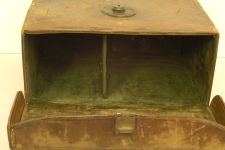
Fig. 5 Showing the re-attached dividing board.
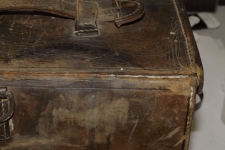
Fig. 6 Tissue repair to split in leather prior to pigmentation.
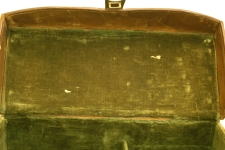
Fig. 7 Tissue repair to the split inserted behind the textile.
For further information, see the complete conservation report